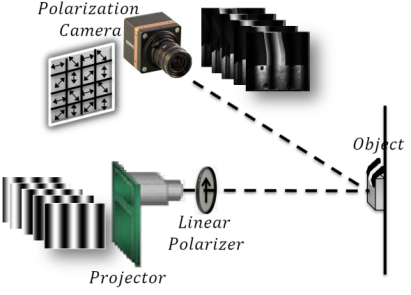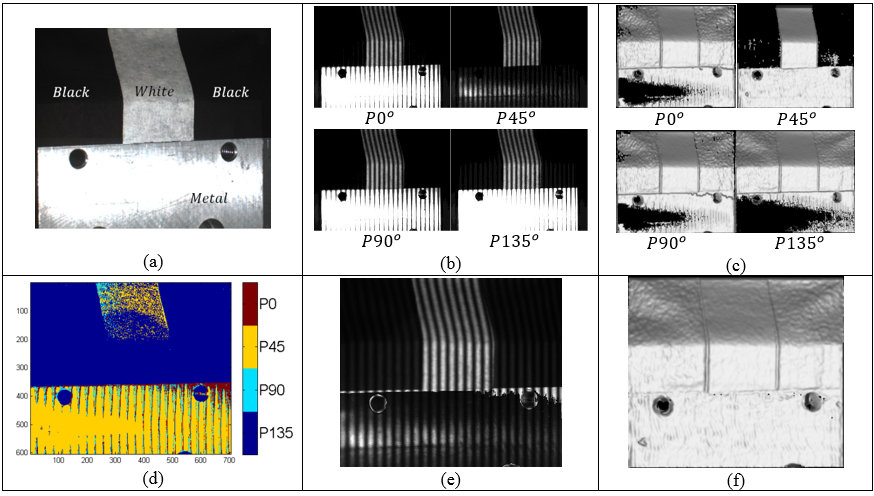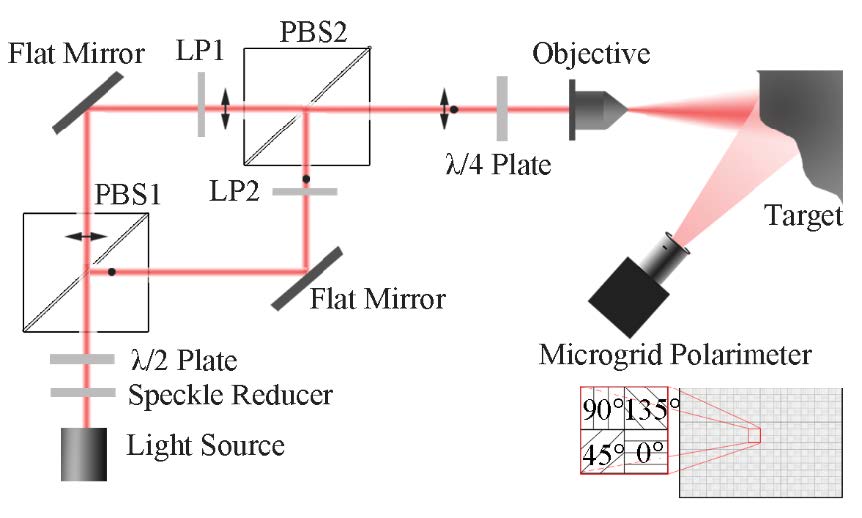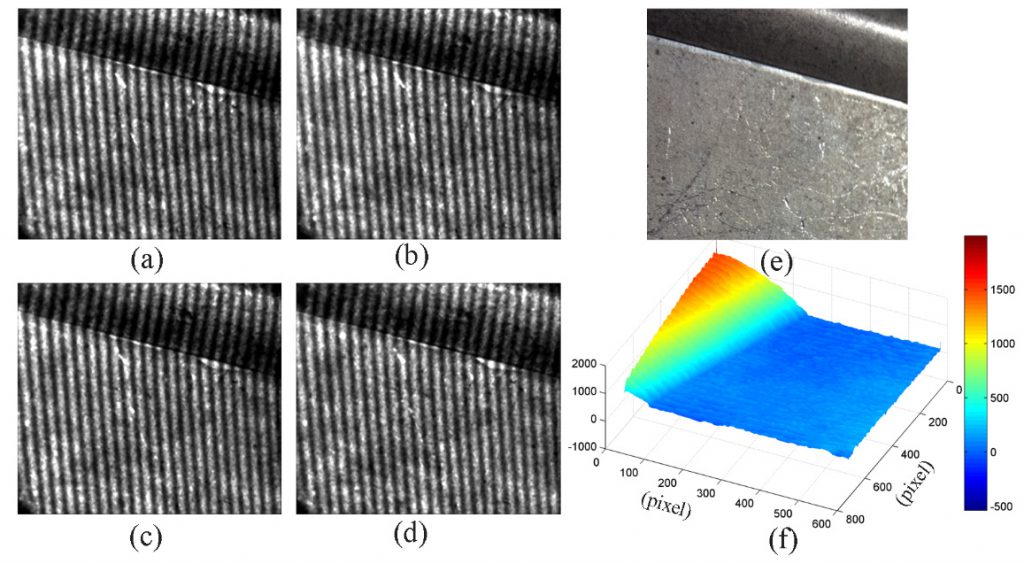Optical Metrology & 3D Imaging
To be updated!
Before 2017
One of our research interests is to develop advanced optical techniques for optical metrology and 3D imaging. The polarized phase shift fringe projection technique developed in our lab has the advantages of high dynamic range and fast imaging speed.
1. Multi-polarization fringe projection imaging for high dynamic range objects
Shape acquisition of three-dimensional (3D) objects is of significant importance for various real-world applications including machine vision, reverse engineering, industrial inspections, and medical imaging. An economic reliable real-time technique that delivers such information is fringe projection imaging. The imaging system comprises a projector-camera pair in which successive phase-shifted fringe patterns are projected onto objects, become distorted, and are then captured by the camera. These captured distorted fringes carry valuable information about the object’s depth, which can be retrieved through phase shifting algorithms. However, conventional fringe projection imagers fail to recover depth data from objects of high dynamic range (HDR) where fringe visibility is greatly reduced in dark regions, bright areas, or over surfaces of large reflectivity variations. For instance, shiny metal objects reflect illuminating light specularly and saturate the camera without carrying any depth content.
In this research, we contribute a single-shot multi-polarization fringe projection (MPFP) algorithm that is capable of processing HDR dynamic scenes. The projected fringes in the imaging system, shown in Fig. 1, are linearly polarized prior to incidence on the object and being captured after reflection through a pixelated micropolarizer camera leading to dissimilar measurements in the multi-polarized channels. Then the MPFP algorithm eliminates any saturation in the raw measurements and forms a decision map that determines the selected polarized channel across all fringe patterns on a pixel-level. The results, shown in fig. 2, are enhanced fringe images that deliver a complete phase calculations and depth rendering of the targeted objects.

Fig. 1. Multi-polarization fringe projection (MPFP) imaging system

Fig. 2. Traditional and multi-polarization fringe projection imaging of simple object; (a) simple three-surfaces object captured by unpolarized camera, (b) raw polarized data of first distorted fringes, (c) shape rendering of five fringe images at separate polarizations, (d) multi-polarization decision map, (e) merging results of first fringe images, and (f) shape rendering of five enhanced fringes.
In summary, the algorithm eliminates saturated or low-contrast fringe regions by selecting different polarization measurements (or the right combination of polarization angle and exposure time if further enhancement is desired), in order to maintain good fringe visibility. This leads to greater coverage of the object in the shape rendering, better measurement of object topography, and thus a more accurate rendering of the object shape.
Publication:
Basel Salahieh, Zhenyue Chen, Jeffrey J. Rodriguez, and Rongguang Liang, “Multi-polarization fringe projection imaging for high dynamic range objects,” Opt. Express 22, 10064-10071 (2014)
2. Multi-polarization fringe projection imaging for high dynamic range objects
For the first time, we propose a novel snapshot phase shift fringe projection three dimensional (3D) surface measurement method using polarization-coded light illumination and polarization camera. The light from the light source is split into two beams, one is left circularly polarized and the other is right circularly polarized, to illuminate the object simultaneously. A four-channel division of focal plane (DoFP) polarization camera is employed to capture the light reflected from the object surface. Four images with a phase shift of π/2 are extracted from the snapshot image and then analyzed to reconstruct a 3D object surface. The proposed method is the first snapshot phase shift fringe projection approach for 3D surface imaging. It is insensitive to motion and has the potential for ultrafast 3D surface imaging.

Fig. 1. Experimental setup. PBS1 and PBS2 – first and second polarization beam splitters, LP1 and LP2 – first and second linear polarizers.

Fig. 2. 3D surface measurement of a machined aluminum part. (a) – (d) phase shifted images, (e) image of the aluminum part, and (f) mesh rendering of 3D surface shape. The unit of x, y axis is pixel and the unit of z axis is 1
Publication:
Zhenyue Chen, Xia Wang, and Rongguang Liang, “Snapshot phase shift fringe projection 3D surface measurement,” Opt. Express 23, 667-673 (2015)

